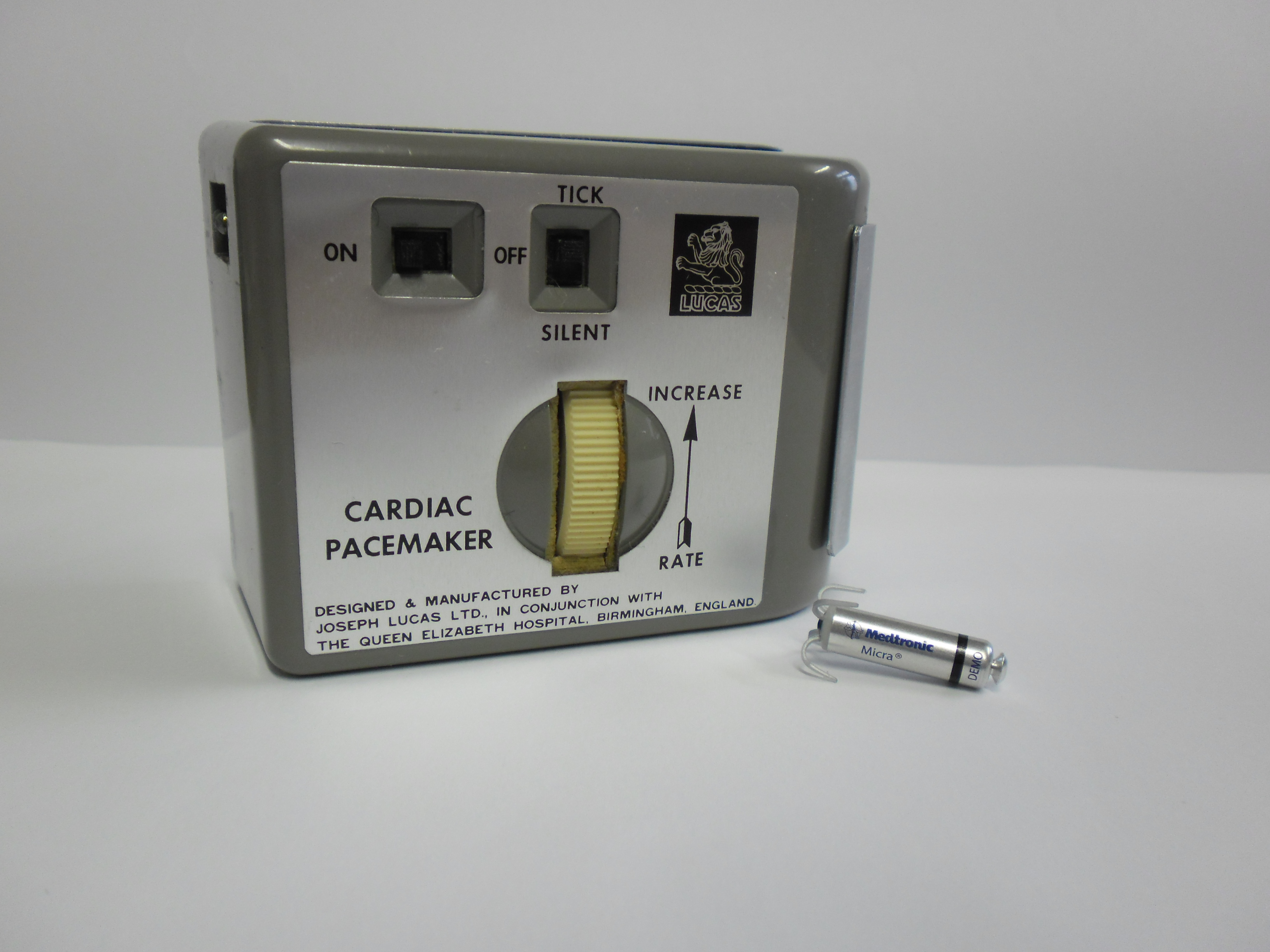
In June 2015, a 96-year-old woman was implanted with the world’s smallest pacemaker at Birmingham’s Queen Elizabeth Hospital, 55 years after University of Birmingham alumni Leon Abrams and Ray Lightwood developed and implanted the world’s first patient controlled variable rate heart pacemaker. With Birmingham’s evident reputation as pioneers in pacemaker technology, we look back at Abrams and Lightwood’s extraordinary contribution, the impact of this and how it paved the way for future developments in heart surgery.
Development of the pacemaker started in response to the high mortality associated with slow heart rates after open heart surgery. Available pacemaker circuits at the time could be unreliable and cause patients infections from the wires and pain from the electrical pulses. Abrams and colleagues at the Queen Elizabeth Hospital set out to tackle these issues.
With Abrams and Lightwood’s use of electrodes attached to the heart coupled to an external pacemaker, they were able to keep all the electronic components outside the body solving the issue of pain and infection, and it also meant it could be replaced in the highly likely event of failure. The primary circuit consisted of an inducing coil supplied by a portable transistor which produced short pulses at adjustable intervals and intensity. This was, therefore, the first rate-adaptive, patient controlled, permanent pacemaker.
The first implant took place in March 1960, with two further implants the following month. These three patients made good recoveries and returned to a high quality of life. By 1966, 56 patients had undergone implantation with one surviving for over 5½ years. In 2002, there were still three surviving pacemaker patients within Birmingham whose first pacemaker system had been of the Lucas-Abrams type. The original device used four 9 volt dry batteries.
The commercial Lucas-Abrams device (named so as it was made by Lucas Industries) was introduced in 1964 and used a single 1.5 volt battery, lasting approximately one month. Patients were able to change the battery themselves and were issued with two devices to cover the event of failure.
Other projects that Ray Lightwood was involved in included an electronic fibrillator, the prosthetic blood vessel and a pain-inhibiting pulser.
Leon Abrams developed an artificial heart valve which was in regular use for many years. Mr Abrams also set up one of the UK’s top centres for lung and heart surgery at the Queen Elizabeth Hospital and established open-heart surgery on the site.
Ray Lightwood died in 2001 after a sudden stroke while changing a light bulb and Leon Abrams died in 2012 at the age of 89.
The tiny new device implanted at last month at Queen Elizabeth Hospital Birmingham, the Medtronic Micra, can be inserted directly in the heart and delivers electrical impulses from an electrode, removing the need for a lead. For patients the implantation process is less intrusive and the potential for infection and complications caused by broken or dislodged wires is significantly reduced.